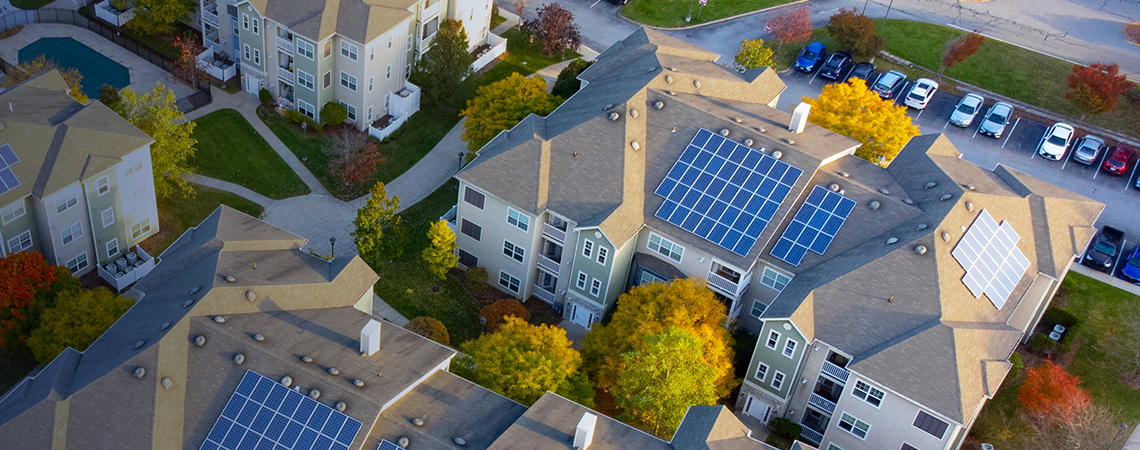Don’t stop here
There’s much more to discover!

Prosumer, smart grid and digital energy: towards a flexible energy system
In recent years, the proliferation of thousands of small generation units within the Italian electricity grid, alongside traditional power plants, has radically transformed system management. This new paradigm, known as distributed generation, offers many end users near-total energy independence and significant economic savings.
ENEA defines distributed generation in its glossary as a decentralized electricity production system based on various small-scale sources. In this scenario, citizens are no longer just consumers; they become active participants in the energy market. The term prosumer was coined to describe consumers who are also producers. Prosumage represents its evolution, referring to prosumers equipped with energy storage systems.
Thanks to distributed generation, smart grids [link: https://corporate.eniplenitude.com/en/one-plenitude-magazine/business-stories/smart-grids-and-smart-district-energy-efficiency], and digital energy, cities and homes are becoming "smart", promoting more responsible energy management in a progressively electrified consumption landscape. This transformation brings significant benefits: by generating part of the energy they consume from renewable sources, users reduce emissions. Additionally, self-generation and self-consumption lead to greater independence from the electricity grid, consequently lowering energy costs.
Distributed generation has revolutionized the national energy landscape, requiring a shift in how electricity grids are managed. The system has transitioned from centralized and programmable energy generation to a vast network of small, dispersed "power plants", often non-programmable. This non-programmability is an inherent feature of renewable energy sources, whose production is heavily influenced by weather conditions and seasonality. To manage this new complexity, smart grids play a crucial role. These modern networks are designed to optimize the management of distributed generation and interconnected mini-grids. This allows anyone to produce energy locally and use it dynamically. Smart grids integrate traditional energy production with energy generated from small- and medium-sized installations, both public and private. This system, where multiple plants contribute to production and storage, fosters the creation of energy communities where locally produced energy can be shared and managed collaboratively.
To fully harness the potential of distributed generation and smart grids and to manage the inherent intermittency of renewable sources, flexibility becomes a key factor. This is not just an abstract concept but a concrete capability of the energy system to adapt in real-time to fluctuations in production and consumption. One can imagine an orchestra where each instrument (power plants, consumers, storage systems) must play in harmony, even when the rhythm changes suddenly. This "harmony" is ensured by flexibility, which can come from various sources: modulation of traditional power plant output, industrial load management, or the activation of distributed resources such as home batteries and electric vehicles. Balancing Service Providers (BSPs), or energy aggregators like Plenitude, act as "conductors", coordinating these resources to provide flexibility services to the grid. Numerous innovative projects are underway to explore different expressions of flexibility, involving the industrial sector, smart buildings, residential settings, and electric mobility. These projects demonstrate how flexibility is a key enabler of the energy transition [read the dedicated article here: https://corporate.eniplenitude.com/en/one-plenitude-magazine/innovation/energy-flexibility].To efficiently manage flexibility and orchestrate this system, digital energy solutions come into play. These provide the necessary digital infrastructure to monitor and coordinate the various connected resources.
Energy digitalization applies smart technologies throughout the entire energy supply chain, from production to consumption. The primary goal is to improve energy efficiency while offering targeted services that enhance comfort and security. This means, for example, monitoring energy distribution through hardware and software systems capable of collecting vast amounts of data (big data) and processing them via the cloud. Digital energy also plays a role in households, enabling near real-time monitoring of energy production, storage, and consumption. This allows for advanced, dynamic control strategies to manage energy peaks, adjusting production, storage, and loads (Demand Side Management). A key feature is the system's ability to be personalized according to individual needs and daily habits. Concrete examples of digital energy in homes include smart scheduling of appliances based on electricity tariff periods and integration with security systems. Technologies such as photovoltaics, storage systems, and the Internet of Things (IoT), working together, transform homes into smart homes, comfortable and capable of managing energy efficiently. At the same time, they reshape the relationship with energy, making the vision of distributed generation a reality, where users take an active role in energy management.
There’s much more to discover!
From simple users to active players: here’s how prosumers are transforming the energy system through production, sharing, and flexibility.
The energy of the (near) future shapes new models that require innovative storytelling methods. Imagine a tomorrow with numerous energy-independent neighbourhoods, each collaborating with the others to produce and exchange electricity from local renewable sources. The homes in these smart districts will also be equipped for energy self-productio...